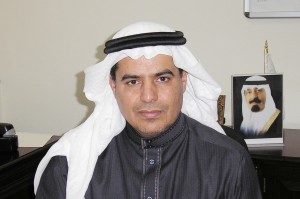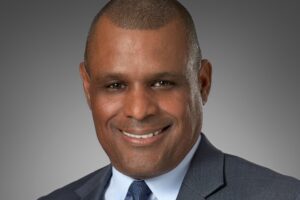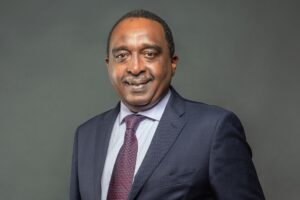
Dr. Abdullah M. Al Homeadan
Vice President, Human Capital & Organizational Excellence
Teletimes – Would you like to highlight the core points of the restructuring in STC and why it was felt necessary?
Abdullah Al Homeadan – There were many reasons for the recent restructuring at Saudi Telecom however there was one dominant factor – to better serve the changing needs of our customers. STC is the only integrated telecommunications company in Saudi Arabia and having recently bundled our products to offer cost-effective packages we had to turn our emphasis next to operating optimally internally.
In addition, we were acutely aware that ultimately our individual customers are rightly concerned about the overall experience of shopping with us. In a large organisation such as ours that can be a real challenge especially when employee groups from diverse business units merge at store level. The steps we have taken now focus on a seamless, integrated offering so our customers enjoy the benefits of one-stop-shopping, faster product introduction and an enhanced customer experience.
It must also be noted that STC is now a formidable international player currently operating in around ten markets. The restructuring covered important aspects of how our international operations are managed and influenced. At Group Level we now have a dedicated CEO for International Operations with a team working closely with each of our affiliates. Building the leadership team at Group Level has given us focus to develop and implement critical Group-wide strategies reflected from our customers’ needs.
TT – Kindly share the present organizational structure of STC (after the restructuring).
AH – The current organisational structure is split across 6 major units – Group Strategy, Technical Operations, Finance & Investments, KSA Operations, International Operations and Shared Services. Each unit is headed by a chief and reports to the Group CEO, Saud Al Daweesh.
The CEO for our KSA business leads all retail and enterprise operations nationwide; the CSO commands all corporate, human capital and regulatory affairs; the CTO manages the network and IT sectors as well as running our wholesale business; the CEO for our International Operations directs all activities in our affiliate companies and works closely with international operations where we have major shareholdings. We are also expecting our Group CFO join us soon who will coordinate all market-related activities with the Tadawul and Capital Markets Authority and actively study strategic investments that STC may be seeking to undertake. Finally, we also have a VP for Shared Services that manages all procurement, facilities, HR and security operations.
TT – What were the basic challenges before you while taking over the office of Vice President, Human Capital & Organizational Excellence in STC?
AH – Fundamentally, those were two main challenges. The first was building programs for a large employee workforce to keep them motivated, engaged and productive. From a Human Capital standpoint we were not fully reaping the benefits of our talent management and leadership development programs and needed critical changes to our working protocols with Corporate Strategy and Shared Services. The second was partnering with the business units in supporting their objectives and getting into the thick of the people-oriented challenges that they faced. The perception of Human Capital was also transaction-based and we were intent on providing a strategic framework to support the overall strategic context.
STC had also announced a three-year strategic plan called LEAD that identified six main goals; one of the key themes being Investing in Human Capital. The overriding challenge set upon us was therefore to manage and deploy talent at the right time and develop the leadership pipeline at all levels. Wrapped in these challenges was enhancing the working culture at STC, developing an organisationally efficient structure and rewarding our core talent competitively.
TT – How did you tackle those challenges while utilizing your previous experiences and expertise?
AH – Past experiences are a rich source to draw tactics from in dealing with current and future challenges. My background briefly: I spent the bulk of my career at the Institute of Public Administration (IPA) after graduating with my bachelor’s degree from King Saud University. While at the IPA, I read for my Masters and PhD at top universities in the US: University of Maine and Florida Atlantic University respectively. I worked there as a trainer, researcher and consultant in addition to being the Director of Development and advisor to the Supreme Ministerial Committee for Administration Organisation. I was also an elected member of the American National Honor Society for Public Administration & Public Affairs. During this time, I also served as an elected board member and Director of Public Budgeting & Finance Project at the International Association for Schools & Institutes of Public Administration (IASIA) in Brussels, Belgium from 1998 to 2001.
I have also headed up a major economic and management consulting firm before joining STC in 2004.
As a senior advisor to the Board, I was in charge of STC’s strategic objectives, level one organization restructuring, Code of Ethics and Governance. Following this, I was entrusted by the CEO, Eng. Saud Al Daweesh to head the Business Development Office (BDO) responsible for restructuring STC, below level one, into a more customer focused organization. This evolved to my appointment as General Manager of Organisation Development for a number of years before moving to the STC International team as General Secretary of International Business Governance.
Having served in this field since 1984, I am therefore able to contextualise and anticipate the challenges of a large organisation like STC by dealing with the people challenges early and building vital working partnerships with the business units within our governance processes.
TT – Are you still having some issues to be addressed?
AH – Well, STC as a group has come a long way. It is a very dynamic organization that believes in continuous development and the pursuit of high standards. There are always several challenges to deal with as we continue our expansion locally and globally. The important aspect here is adopting the best of people, organization and culture.
A Human Capital strategy has been crafted to deal with these three pillars over the coming 5-7 years and as the HC leader of the group, I strive to be what I call “an iguana leader”: A leader with one eye on current issues with the other fixated at a future end point. As someone who has spent considerable time in the Human Capital sector, I am proud of what we have overcome to get here and blessed to have a team today that shares in a successful vision for the future.
TT – In your opinion, how important is the role of Human Capital in the Business Industry at present times?
AH – The Human Capital function is quite simply critical in the marketplace we operate in and more so in this part of the world where government and cultural reforms are changing the dynamics of the labour force significantly. In addition, the transition of business into a post capitalist society is built on the realisation that the core primary assets are knowledge workers and highly motivated employees.
Human Capital plays a very significant role in business and industry because the nature of work has evolved significantly. In contrast with the industrial-age era companies today operate in a highly skilled work environment where their most valuable employees are continuously approached by competing forces vying for their attention. This group of employees is not only business-critical but also highly mobile and demanding. The human resource management of such segmented groups requires a different approach from that which served workers from industrial, factory-based, mass-production operations.
The other major shift over time has been the need to engage Human Capital within the strategic cycle and support core business priorities. Collaborating with Corporate Strategy and senior management teams in developing its initiatives has meant that Human Capital is becoming more perceptive, analytical and business-minded in its approach. This outlook has earned Human Capital a seat at the management table and made it accountable in delivering business results especially where organisational design and people capabilities are central.
Human Capital has more recently also been charged with managing culture change initiatives and the promotion of healthy working environments. Once again, this has evolved following studies that link increased productivity and retention gains with giving a voice to employees’ opinions about how best to develop their working environments. At STC, we are pleased at how these initiatives were received initially and look forward to building on this strongly for the future.
TT – Despite its acknowledged importance, the value of human capital is not captured as an asset in the balance sheet. What is your approach towards this and to what extent is STC capturing its human capital in the statements as an asset and not just a cost (salaries)?
AH – Human resources, unlike financial or physical assets, are intangible capital. While there are other intangible assets, Human Capital is the only intangible asset that can be influenced but never completely controlled, invested in wisely or wasted thoughtlessly and still have tremendous value. Management and measurement of human capital therefore becomes part art and part science.
The discussion now taking place is how major strategic investments that companies are making to foster and maximise the knowledge of its people are being acknowledged and reflected. The absence of human capital’s valuation on the balance sheet is thus becoming even more evident.
Taking this all in context however, “what gets measured gets managed” so only when relevant value metrics of human capital are measured do they stand a better chance of becoming successful within the context of an applied strategic business plan. The objective is therefore to measure in quantifiable terms the true potential of an organisation’s human capital to reap the value of benefits this essential asset can afford an organization.
I’ve recall reading that BT’s Human Capital team were leading an initiative to build their own Human Capital balance sheet applying the principles of traditional financial reporting to their employee base. This kind of analysis is refreshing and promotes healthy debate within the HR function. Value measurement underpins reporting of Human Capital ROI and companies will soon be obliged to follow a broad set of metrics over time to reflect their unique Human Capital investments.
TT – STC is the one of the biggest private sector organization in the Kingdom, and therefore has one of the largest human capital in KSA. What are the key tools behind the Human Capital and Human Resource Management here in STC?
AH – Many factors play a role in the management of our workforce who also happen to be our primary customers. Key among the tools at our disposal are our leadership and talent management programs. As we move into a more customer-centric marketplace our challenge is to identify, develop and empower leaders from within our large pool to lead us going forward. It is critical to our future strategic goals to have the right capabilities and leaders in place building supporting environments for them to function efficiently.
Recently, there has also been much emphasis on developing succession plans for all key positions and doing more to develop potential successors. Likewise, at middle management and operational levels we operate a talent management program to track key talent and ensure we are working to maintain high levels of capability. Both these initiatives are drawing promising responses from the business units and align with our strategic vision of being an employer of choice for graduates, experienced hires and subject matter experts.
Besides these approaches we work closely with senior management teams and line managers within the business units to determine effective organisation structure design, set the overall policy framework and model effective reward systems to build a high energy working environment.
TT – Would you like to elaborate specifically your role as the Vice President, Human Capital and Organizational Excellence?
AH – The primary purpose of my position is to lead the processes of designing, developing, proposing, obtaining approvals for (and ensuring that business units practices are aligned with) Human Capital Strategy and policies for STC Group. In my role, I seek to ensure that Human Capital Strategy is very closely aligned with STC Group Strategy in order to support the delivery of corporate results. Accordingly, we focus on creating enabling environments for the Business Units by creating policies, programs, and processes that give employees a Compelling Value Proposition at STC. A Compelling Employee Value Proposition promotes the attraction, retention, motivation and skill development of high performing employees who play critical roles in achieving STC Group strategic goals and objectives.
Operationally, my role is organized along the following areas and thrusts: Development of Strategy, Policies and System; Organization Design; Organization Efficiency; Total Rewards & Performance; Workforce Planning & Analytics; Leadership Development & Succession Planning and Change Management.
TT – What are your achievements since holding this office in STC?
AH – Following my appointment as VP Human Capital, I have taken steps to rebuild the HC function and clarify our role vis a vis a Human Capital Strategy that is aligned to our overall Corporate LEAD strategy. Additionally, we have worked closely with the business units to enable a smooth transition to the new operating model, reengineered our working processes with key stakeholders and further strengthened capabilities within our sector.
A HC strategy was derived from the digitisation strategy of STC where emphasis is focussed on our three pillars: our people, our organization and our culture. We have started to play the role of business enabler.
TT – Would you like to elaborate the role played by the Group CEO, Eng. Saud Al Daweesh in restructuring and reforming the organization of STC?
AH – Eng. Saud Al Daweesh is the GPS that keeps all STC functions moving into the right direction. He has initially introduced the customer-centricity approach and has been an inspirational leader in guiding us through the restructure. Various initiatives borne of his efforts are evident in the organisational structure today: international expansion, a comprehensive and unified broadband strategy focus and operational preparedness of our entry into the digitisation space.
TT – Your views about Teletimes International which is the only tri-regional magazine focused towards the ICT and Telecom Sectors of The Middle East, Asia and Africa?
AH – The analysis and depth of information published by Teletimes International is truly outstanding. I find the regional coverage of information very relevant for our purposes and pleased that we have a strong readership here at STC. No doubt it is a vital source of accurate and timely information for me and several colleagues and I wish the team at Teletimes the very best in the coming future.
June 4, 2025











